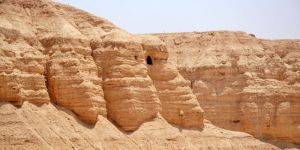Lenten Campaign 2025
This content is free of charge, as are all our articles.
Support us with a donation that is tax-deductible and enable us to continue to reach millions of readers.
A new study of the Dead Sea Scrolls suggests that multiple scribes could have contributed to their writing. The research was conducted by paleographers and computer scientists from the University of Groningen.
Inverse reports that the team employed artificial intelligence software with advanced pattern recognition to analyze the characters. The work focused on the motions of the writing, such as curvature and character shape. Through analysis the team identified several slight variances that suggested there could have been more than one hand at work.
To the human eye, these tiny variances are practically indistinguishable. In fact, previous studies that relied on the human eye suggested the scrolls had but one scribe. To the AI, however, the variances are all clues that help tell the story of the scrolls.
In their research, published in the journal Plos One, the team notes that there are many factors that could create slight changes to the script. A lone scribe’s writing could still be influenced by fatigue, environmental changes, or by the writing utensils. These slight alterations would be very similar to the variances displayed by a second scribe. The changes can easily fool the human eye, but the AI can see right through it.
The authors wrote:
The study came to the conclusion that the scrolls had multiple scribes after analyzing 2,000 digital images. Careful examination clearly showed subtle but persistent differences between two columns of writing. These were made more noticeable thanks to a lacuna -- a purposefully blank section of the manuscript.
The lacuna, or column break, was the smoking gun. The slight change in handwriting appeared after the lacuna, rather than at random intervals throughout the text. This suggests that a second scribe picked up the work from the column break. It is believed they mimicked the original writer’s style to complete the work.
While the presence of multiple scribes may sound like meager findings, the research has given valuable insight into the scroll’s production. It also shows that a uniformity of style does not necessarily point to the work of a single scribe. Experts are hopeful that this revelation could lead to more discoveries regarding ancient texts.









